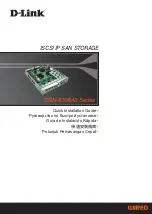
swru138
30/33
8.3.3 SPI Mode 3 (Bypass mode)
SPI Mode 3 is a particular mode that enables the USB controller on the EB to access the EM,
and thus bypassing the MSP430. Note that either SPI_M1 or SPI_M2 has to be selected at
the same time in order for the bypass mode to work.
Figure 26 - SPI Mode 3
Also note that in this mode, both MSP430 and CC2511 are operating as SPI masters. The
MSP430 has to set up in multi master mode (enable 4 wire SPI interface) in order for the
mode to operate properly.
The bypass mode only takes effect when the CC2511 assert the chip select signal. At this
instant, the MSP430 will detect that the CS signal goes low, thus releasing the bus, operating
as a passive slave. This chip select signal is routed to the EM chip select signal, enabling its
SPI interface. The CC2511 can now operate as SPI master and communicate with the EM as
if the MSP430 was not present on the bus. The EM chip select signal from the MSP will
temporarily be disconnected.
Once CC2511 de-asserts the chip select signal, the MCU board switches back to one of the
chosen SPI modes (SPI_M1 or SPI_M2).
This mode can be particularly handy for debugging purposes. While debugging software on
the MSP430 and using the RF EM, it is possible to halt the MSP430 application (e.g. at a
breakpoint) and use SmartRF Studio to read out the registers from the radio – without
interfering with the application.
9 CC2520EM
Please refer to the reference design on the web and a description of the evaluation module in
the CC2520 Datasheet.
Summary of Contents for CC2520
Page 1: ...CC2520 Development Kit User s Guide swru138...
Page 34: ...swru138 Appendix A SmartRF05EB Schematics...
Page 35: ......
Page 36: ......
Page 37: ......
Page 38: ......
Page 39: ......
Page 40: ......
Page 41: ...swru138 Appendix B CCMSP EM430F2618 Schematics...
Page 42: ......
Page 43: ......
Page 44: ......
















































